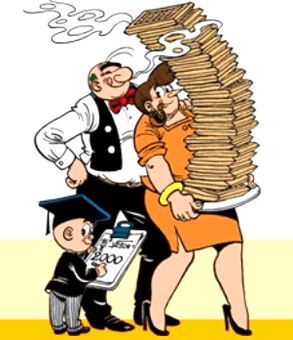
The Adventures of Nero or Nero was a Belgian comic strip drawn by Marc Sleen and the name of its main character. The original title ranged from De Avonturen van Detectief Van Zwam in 1947 to De Avonturen van Nero en zijn Hoed in 1950, and finally De Avonturen van Nero & Co from 1951. It ran in continuous syndication until 2002. From 1947 until 1993 it was all drawn by Sleen himself. From 1992 until 2002 Dirk Stallaert took over the drawing while Sleen kept inventing the stories.

Marcel Honoree Nestor (ridder) Neels, known as Marc Sleen, was a Belgian cartoonist. He was mostly known for his comic The Adventures of Nero and Co., but also created gag comics like Piet Fluwijn en Bolleke, De Lustige Kapoentjes, Doris Dobbel, Oktaaf Keunink and De Ronde van Frankrijk.
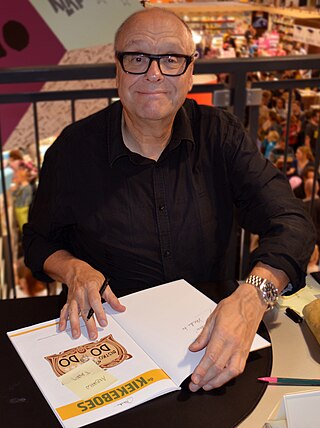
Merho, is a Belgian comic-book writer and artist, best known for creating the comic strip De Kiekeboes.
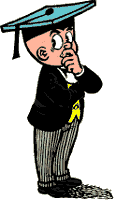
Adhemar is a Flemish comic book character. He is the son of Nero in the eponymous Belgian comic strip series The Adventures of Nero by Marc Sleen and one of the main protagonists. He is a child prodigy who is both a professor as well as an inventor. His full title is doctor professor Adhemar. He is easily recognizable due to his mortarboard and tuxedo.
Nero is a Flemish comic book character and the main protagonist in Marc Sleen's long running comic book strip series The Adventures of Nero (1947–2002). He is one of the most recognizable comic book characters in Belgium and comparable to Lambik from the Suske en Wiske series by Willy Vandersteen.
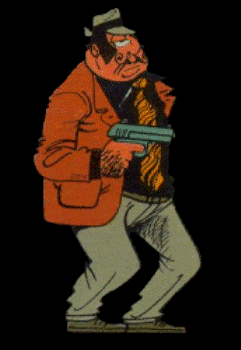
Ricardo is a Flemish comic book character and the main antagonist in The Adventures of Nero series by Marc Sleen. He is a ruthless maffiosi who hates Nero with a passion. Together with Geeraard de Duivel and Matsuoka Ricardo is Nero's most frequent opponent, appearing in at least 24 albums, even surviving several seemingly deaths.

Jerom is a Flemish comic book character and one of the main cast members in the Belgian comic strip, Suske en Wiske by Willy Vandersteen. He is the series' strongman and well known for his physically impossible powers that often make him the deus ex machina who solves every problem. Jerom's popularity with readers is so huge that he inspired at least two spin-off series: Jerom de Gouden Stuntman (1962–1991) and J. ROM - Force of Gold (2014).

Piet Fluwijn en Bolleke was a Belgian gag-a-day comic strip series drawn by Marc Sleen from 1944 until 1965. It was continued by artists Hurey and Jean-Pol until 1974.
Ons Volkske was the youth supplement of the Flemish newspaper Ons Volk Ontwaakt. It was published without interruption from 1932 until 1988, except for the years during World War II. The magazine was notable for its comics and together with 't Kapoentje it was the most important comic book magazine in Flanders.
't Kapoentje was a youth supplement published by the Flemish newspaper Het Volk from April 3, 1947 until 1989. It was notable for its comics and, together with Ons Volkske, the most important comic book magazine in Flanders.

De Lustige Kapoentjes was a long-running Flemish comic book series, which existed under different titles and was drawn by different artists, among whom Marc Sleen and Willy Vandersteen are the most well known. The series was published in 't Kapoentje, the youth supplement of Het Volk, and in Ons Volkske, the youth supplement of De Standaard. They were the mascots of 't Kapoentje from 1947 until the magazine's demise in 1985.

De Ronde van Frankrijk was a Belgian gag cartoon comic strip series by Marc Sleen, in which he made a comedic report of every daily tournament of the annual cycling contest the Tour de France. Sleen drew the strip each year, from 1947 up until 1964, for the Flemish newspapers Het Vrije Volksblad and Het Volk.
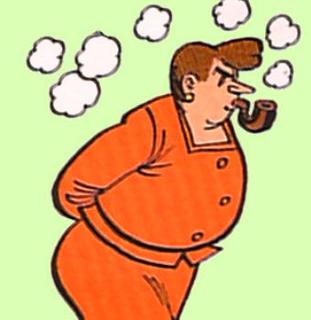
Madam Pheip is a character from the Flemish comic strip The Adventures of Nero by Marc Sleen. In the series she is one of Nero 's personal friends and married to Meneer Pheip, with whom she has one child, Clo-Clo. Madam Pheip also adopted two children, Petoetje, and Petatje.
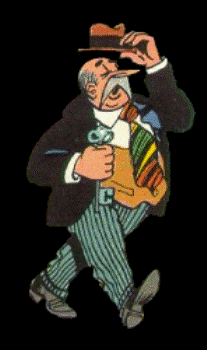
Meneer Pheip is a Flemish comic book character from the Belgian comic strip The Adventures of Nero by Marc Sleen. In the series he is part of Nero's personal circle of friends, despite often being up in arms with him. He is the husband of Madam Pheip, father of Clo-Clo and adoptive father of Petoetje and Petatje.
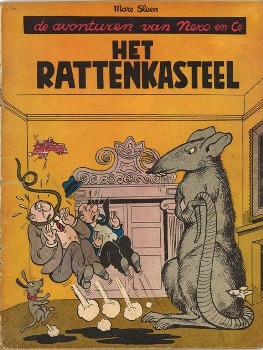
Het Rattenkasteel is a 1948 comic book album in the Belgian comics series The Adventures of Nero by Marc Sleen. It's the fourth album in the series and acclaimed as one of Sleen's best. In the 2000s the story was collected and re-published by the Flemish newspapers Het Belang van Limburg and Gazet van Antwerpen in a special series entitled "De beste 10 volgens Marc Sleen", where Sleen choose his ten favorite "Nero" stories. He placed "Het Rattenkasteel" first.
Detective Van Zwam is a Flemish comics character in the Belgian comics series The Adventures of Nero by Marc Sleen. He is a brilliant detective and able to find clues from even the tiniest of evidence.
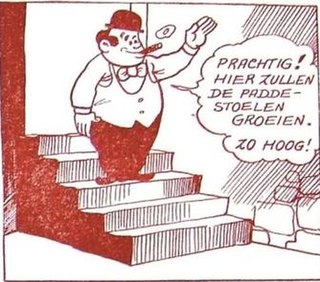
Doris Dobbel was a Belgian gag-a-day comics series, written and drawn by Marc Sleen, between 8 April 1950 and 1965 and published in the magazine De Middenstand.
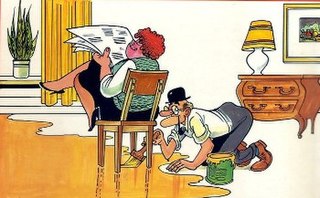
Oktaaf Keunink was a Belgian comics series, written and drawn by Marc Sleen. It was published between 16 November 1952 and 4 April 1965 in the magazine Ons Zondagsblad.

Petoetje is a Belgian comics character from the comic strip The Adventures of Nero by Marc Sleen. He is a teenage black boy who originates from Papua New Guinea, but was adopted by Madam Pheip and Meneer Pheip, along with another orphan child, Petatje.

Petatje is a Belgian comics character from the comic strip The Adventures of Nero by Marc Sleen. She is a teenage girl who was adopted by Madam Pheip and Meneer Pheip, along with another orphan child, Petoetje.
















